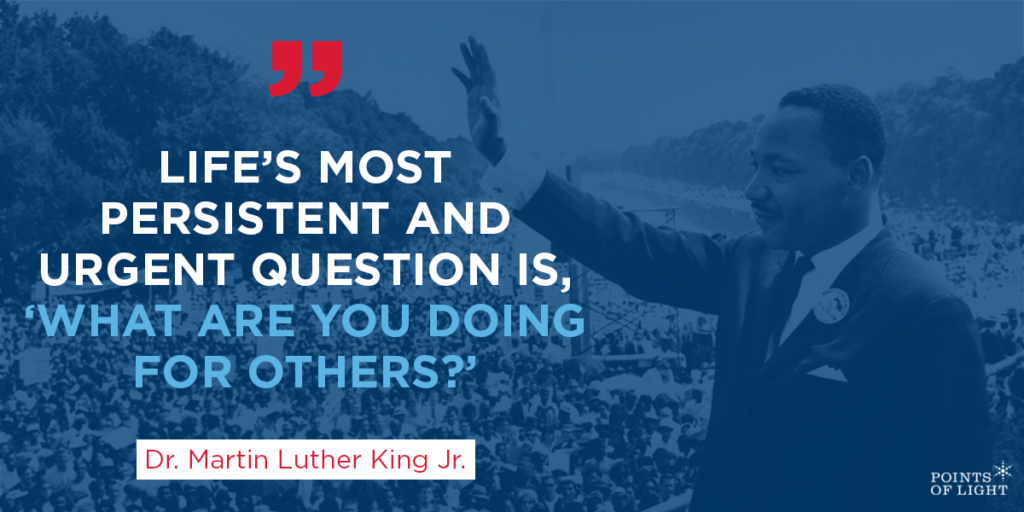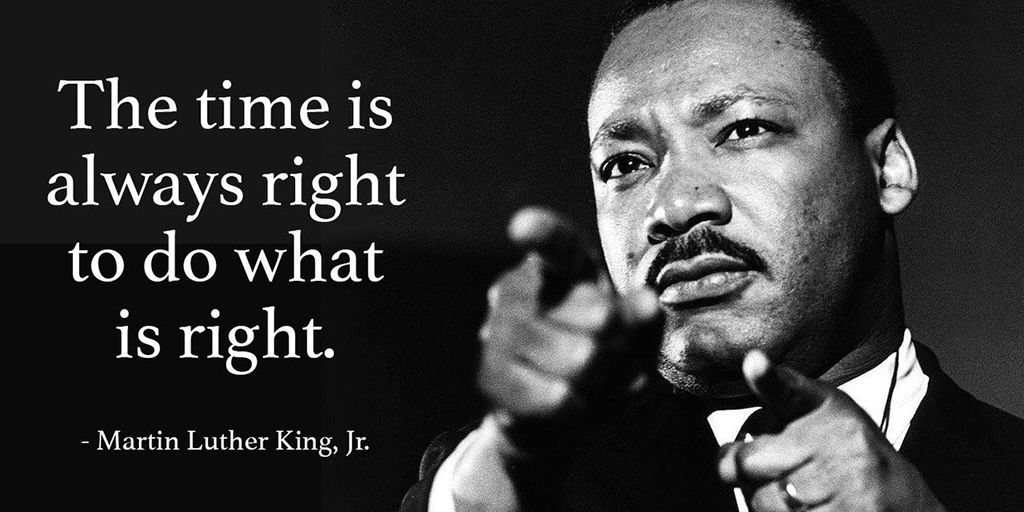

First, the story of an American Hero:
January 17th is Martin Luther King, Jr. Day, a national holiday in the US. Martin Luther King Jr. was an American Baptist minister and activist who became the most visible spokesman and leader in the American civil rights movement from 1955 until his assassination in 1968. King advanced civil rights through nonviolence and civil disobedience, inspired by his Christian beliefs and the nonviolent activism of Mahatma Gandhi. He was the son of early civil rights activist and minister Martin Luther King Sr.
Dr. King’s “I Have A Dream” speech is as important today as it was when he gave it in 1963. Here is a portion of it:
Let us not wallow in the valley of despair. I say to you, my friends, we have the difficulties of today and tomorrow.
I still have a dream. It is a dream deeply rooted in the American dream.
I have a dream that one day this nation will rise up and live out the true meaning of its creed. We hold these truths to be self-evident that all men are created equal.
I have a dream that one day out in the red hills of Georgia the sons of former slaves and the sons of former slaveowners will be able to sit down together at the table of brotherhood.
I have a dream that one day even the state of Mississippi, a state sweltering with the heat of oppression, will be transformed into an oasis of freedom and justice.
I have a dream that my four little children will one day live in a nation where they will not be judged by the color of their skin but by their character.
I have a dream today.
Certainly, this is not the message being forced on our military personnel and our school children by the mandatory attendance at Critical Race Theory classes (of course, they use another name for these classes). Why in the world would anyone want to join our military and be prepared to give their lives of this nation—if it is and always has been an evil place? A look at history shows that this has always been a good place, but not a perfect one.
ALSO on January 17th, in military history:
On January 17th, 1781, during the Revolutionary War, relying upon strategic creativity, Brigadier General Daniel Morgan and a mixed Patriot force routed British Lieutenant Colonel Banastre Tarleton and a group of Redcoats and Loyalists at the Battle of Cowpens.
Commander in chief of the Southern Army, Major General Nathaniel Greene had decided to divide Patriot forces in the Carolinas in order to force the larger British contingent under General Charles Cornwallis to fight them on multiple fronts—and because smaller groups of men were easier for the beleaguered Patriots to feed. Daniel Morgan took 300 Continental riflemen and 740 militiamen with the intention of attacking the British backcountry fort, Ninety-Six.
In response, Cornwallis dispatched Tarleton with 1,100 Redcoats and Loyalists to catch Morgan, whom he feared might instigate a broad-based backcountry Patriot uprising. Morgan prepared for the encounter with Tarleton by backing his men up to a river at Cowpens, north of Ninety-Six.
As Tarleton’s men attacked, Morgan instructed the militia to skirmish with them, but to leave the front line after firing two rounds. The British mistook the repositioning of the Americans as a rout and ran into an unexpected volley of concentrated rifle fire coupled with a cavalry charge and followed by the return of the militia. Tarleton escaped, but Morgan’s troops decimated his army.
American rifles, scorned by Britain’s professional soldiers, proved devastatingly effective in this engagement. The British lost 110 men and more than 200 more were wounded, while an additional 500 were captured. The American losses totaled only 12 killed and 60 wounded in the first Patriot victory to demonstrate that the American forces could outfight a similar British force without any other factors—such as surprise or geography—to assist them.
On January 17th, 1865, during the Civil War, General Sherman’s army was rained in at Savannah, Georgia, as it waited to begin marching into the Carolinas.
In the fall of 1864, Sherman and his army marched across Georgia and destroyed nearly everything in their path. Sherman reasoned that the war would end sooner if the conflict were taken to the civilian South, a view shared by President Lincoln and General-in-Chief Ulysses S. Grant. Sherman’s men tore up railroads, burned grain stores, carried away livestock, and left plantations in ruins. The Yankees captured the port city of Savannah just before Christmas, and Sherman paused for three weeks to rest his troops and resupply his force.
After his rest, he planned to move into the Carolinas and subject those states to the same brutal treatment that Georgia received. His 60,000 troops were divided into two wings. General Oliver O. Howard was to take two corps and move northeast to Charleston, South Carolina, while General Henry Slocum was to move northwest toward Augusta, Georgia. These were just diversions to the main target: Columbia, South Carolina.
As Sherman was preparing to move, the rains began. On January 17, the Yankees waited while heavy rains pelted the region. The downpour lasted for ten days, the heaviest rainfall in 20 years. Some of Sherman’s aides thought a winter campaign in the Carolinas would be difficult with such wet weather, but Sherman had spent four years in Charleston as a young lieutenant in the army, and he believed that the march was possible. He also possessed an army that was ready to continue its assault on the Confederacy. Sherman wrote to his wife that he “…never saw a more confident army…The soldiers think I know everything and that they can do anything.”
Sherman’s army did not begin moving until the end of the month. When the army finally did move, it conducted a campaign against South Carolina that was worse than that against Georgia. Sherman wanted to exact revenge on the state that had led secession and started the war by firing on Fort Sumter.
On January 17th, 1961, in his farewell address to the nation, President Dwight Eisenhower warned the American people to keep a careful eye on what he calls the “military-industrial complex” that has developed in the post-WWII years.
A fiscal conservative, Eisenhower had been concerned about the growing size and cost of the American defense establishment since he became president in 1953. In his last presidential address to the American people, he expressed those concerns in terms that frankly shocked some of his listeners.
Eisenhower began by describing the changing nature of the American defense establishment since WWII. No longer could the US afford the “emergency improvisation” that characterized its preparations for war against Germany and Japan. Instead, the US was “compelled to create a permanent armaments industry” and a huge military force. He admitted that the Cold War made clear the “imperative need for this development,” but he was gravely concerned about “the acquisition of unwarranted influence…by the military-industrial complex.” In particular, he asked the American people to guard against the “danger that public policy could itself become the captive of a scientific-technological elite.”
Eisenhower’s blunt language stunned some of his supporters. They believed that the man who led the country to victory in Europe in WWII and guided the nation through some of the darkest moments of the Cold War was too negative toward the military-industrial complex that was the backbone of America’s defense. For most listeners, however, it seemed clear that Eisenhower was merely stating the obvious. WWII and the ensuing Cold War resulted in the development of a large and powerful defense establishment. Necessary though that development might be, Eisenhower warned, this new military-industrial complex could weaken or destroy the very institutions and principles it was designed to protect.








